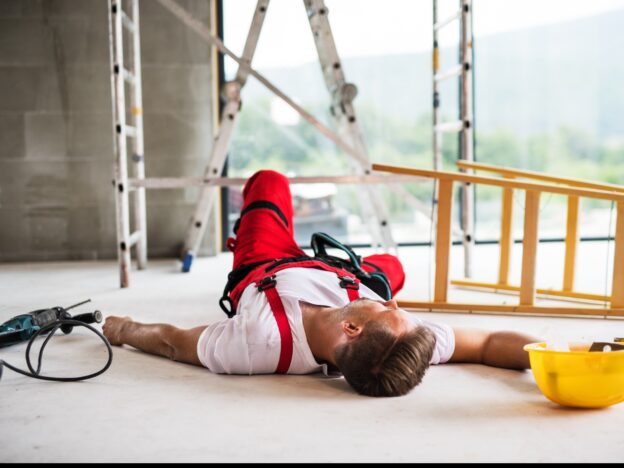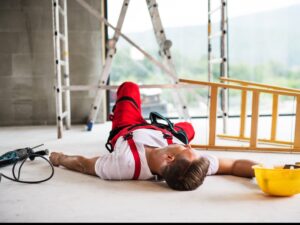If you have been injured in a warehouse accident at work due to your employer breaching the duty of care they owed you, you may wonder whether you’re eligible to make a personal injury claim. This guide will explore the eligibility criteria that need to be met in order to do so, as well as the time limits that need to be adhered to, and the evidence that could help strengthen your case.

Warehouse Accident Compensation
Additionally, it will discuss the central piece of workplace health and safety legislation that outlines the duty of care an employer has with regard to the welfare and safety of their employees. There will also be examples of how an accident in a warehouse could occur if there is a breach of this duty, as well as the subsequent injuries that could be sustained as a result.
We will also cover the factors that could be considered when calculating compensation for a workplace accident, and what a payout following a successful claim could include.
Finally, we provide an understanding of of No Win No Fee agreements, and how it could help if you work with a solicitor who provides their services in this capacity.
For more information on accident at work claims, please speak with an advisor by using the following contact details:
- Contact us online
- Phone us on the number at the top of the page
- Use our live chat feature below
Eligibility Criteria When Claiming For A Warehouse Accident
An employer needs to take reasonable and practicable steps to prevent employees from becoming harmed at work. This is their duty of care as established by the Health and Safety at Work etc. Act 1974.
Some of the ways they can uphold this duty includes performing risk assessments on a regular basis, and providing adequate training to their employees. A failure to do so could lead to accidents at work that cause injury, such as an accident in a warehouse.
In order to begin a personal injury claim following a warehouse accident at work, you need to be able to prove that:
- Your employer owed you a duty of care at the time and location of the accident.
- They breached this duty of care.
- You experienced a physical injury, psychological harm, or both, as a result of the breach.
In personal injury claims, these criteria lay the foundation of negligence. If this can be proven, you may have valid grounds to seek personal injury compensation. However, you also need to ensure you begin legal proceedings within the time limit set out in the Limitation Act 1980. This states that generally you have a time limit of three years from the accident date to start your claim.
How Could A Warehouse Accident At Work Occur?
There are several ways a warehouse accident could occur. For example:
- Faulty equipment: You may be instructed to use a faulty pallet truck to move stock from one area of a warehouse to another. As a result, you experience a crushed rib or crushed leg injury after the faulty pallet truck topples over onto you.
- Lack of training: Your employer instructs you to carry out manual handling activities without the adequate training. As a result, you use the incorrect lifting techniques and sustain a soft tissue injury to the back.
- Falling items: Shelves in a warehouse may have been overstocked causing items to fall off and hit you on the head. As a result, you sustain a head injury.
To discuss your specific case and find out whether you’re eligible to make a workplace accident claim, please contact an advisor on the number above.
How Much Warehouse Accident Compensation Could You Receive?
Following a successful warehouse accident claim you will receive compensation under general damages for the pain and suffering your injury has caused you to experience. This includes both psychical and psychological injuries.
Several factors can influence the award given for injuries, such as the severity, and future prognosis. In order to assign a value to the harm you sustained, solicitors can refer to medical evidence provided in support of your case, as well as a document called the Judicial College Guidelines.
This contains guideline award brackets, some of which you can find in the table below. However, please only use these as a guide because settlements can vary depending on the unique circumstances of each case.
Compensation Figures
| Injury | Severity | Value | Notes |
|---|---|---|---|
| Head | Moderate (ii) | £90,720 to £150,110 | An intellectual deficit of a moderate to modest nature with a significantly reduced ability to work and a risk of epilepsy. |
| Head | Moderate (iii) | £43,060 to £90,720 | Memory and concentration are affected with a reduced ability to work and a small risk of epilepsy. However, dependence on others is limited. |
| Leg | Severe (iii) | £39,200 to £54,830 | Serious compound or comminuted fractures are covered in this bracket. |
| Leg | Less Serious (i) | £17,960 to £27,760 | Fractures where recovery is incomplete. |
| Back | Moderate (i) | £27,760 to £38,780 | Compression or crush fracture of the lumbar vertebrae causing a substantial risk of osteoarthritis and ongoing pain and discomfort. |
| Neck | Moderate (i) | £24,990 to £38,490 | Cases where the neck and back suffer serious soft tissue injuries. |
| Hand | Severe Fractures to Fingers | Up to £36,740 | Injuries may lead to partial amputation and cause deformity, grip impairment, reduced mechanical function and disturbed sensation. |
| Hand | Less Serious | £14,450 to £29,000 | A severe crush injury causing significant function impairment. |
| Ankle | Modest | Up to £13,740 | Less serious, minor or undisplaced fractures, sprains and ligamentous injuries are covered in this bracket. |
| Chest | Fractures of Ribs | Up to £3,950 | Serious pain and disability is caused over a period of weeks. |
Special damages
Another head of claim you could potentially receive as part of your overall payout is called special damages. Special damages compensate for any financial losses you have experienced as a result of the accident in which you sustained harm. Examples can include:
- Travel costs.
- Medical costs.
- Loss of income.
Evidence in the form of receipts, payslips, and invoices could help prove any losses. As such, you should keep a record of any documentation to help when claiming these costs back.
For further guidance on the compensation you could receive following a successful warehouse accident claim, please contact an advisor on the number above.
What Evidence Do You Need When Making An Accident At Work Claim?
Evidence can help you prove employer liability, as well as show that you experienced harm due to them breaching the duty of care they owed you. As such, it could benefit you to gather any of the following:
- CCTV footage showing the accident.
- A diary highlighting the treatment you have received as well as the symptoms you experienced due to your injuries.
- Copies of your medical records, such as doctor reports or X-ray scans.
- Photographs of your injury and the accident site.
- Contact details of any potential witnesses who can provide another account of how the accident occurred.
If you are unsure how to go about collecting evidence, you could call our team. They can offer further guidance, and may be able to connect you with an accident at work solicitor from our panel if they find you have a valid claim. A solicitor can then help you build your warehouse accident claim and ensure it is presented in full within the relevant time limit.
Use No Win No Fee Solicitors To Make A Work Injury Claim
The No Win No Fee solicitors from our panel have experience handling accident at work claims. If you have a valid claim, and wish to seek legal representation, they could offer you a contract called a Conditional Fee Agreement. The terms of this agreement typically mean the following:
- At the start of your claim, and as it is ongoing, you won’t need to pay for their services.
- Following an unsuccessful claim, no fees for the work your solicitor has done on your case will be required.
- After the completion of a successful claim, your solicitor will take a success fee from your compensation. They take this as a percentage which has a legal cap, ensuring you still keep the majority of your settlement.
If you wish to find out more about the services the solicitors from our panel could offer, and whether you’re eligible to have them represent your warehouse accident claim, please contact an advisor. To reach them, you can:
- Contact us online
- Phone us on the number at the top of the page
- Use our live chat feature below
Learn More About Making A Warehouse Accident Claim
For more of our helpful guides:
For more external resources:
- NHS – First Aid
- Health and Safety Executive – Warehousing
- GOV – Statutory Sick Pay
Thank you for reading our guide on when you could be eligible to make a personal injury claim following a warehouse accident at work. For further guidance, please call an advisor on the number above.
Writer Matthew Winchester
Editor Meg Martin





